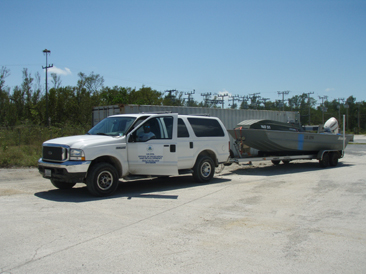
Wetland survey sites are often remotely located and accessed by four-wheel drive vehicle…

…outboard boat…
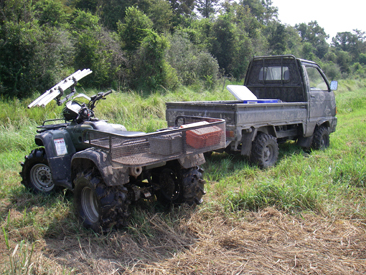
…All-Terrain Vehicles…
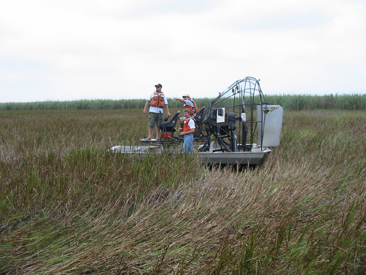
..Airboats…
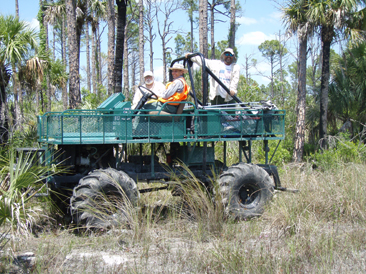
…or swamp buggy….
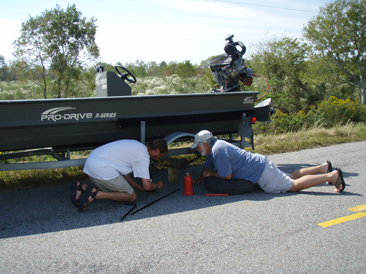
...and sometimes unexpected things go wrong along the way. Here field researchers demonstrate their problem-solving skills to change the tire on the boat trailer on the side of an interstate highway in Louisiana.
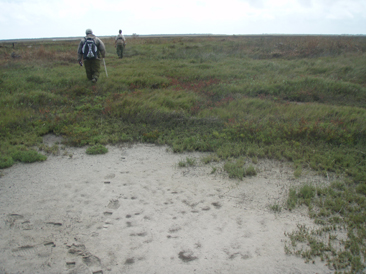
After traveling to a point near the study site by various forms of transportation, field crews often hike as much as 2 miles to the sampling point.
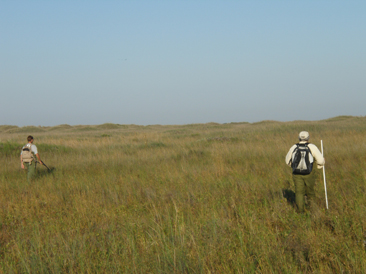
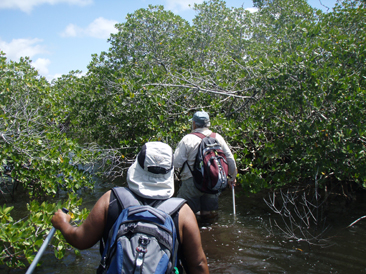
Here you see the fearless researchers carrying sampling gear on their backs and wading through hip-deep water through mangrove trees

Survey field personnel, wearing protective suits to fend off biting insects, wade through hip-deep water through a cypress swamp to get to the study site
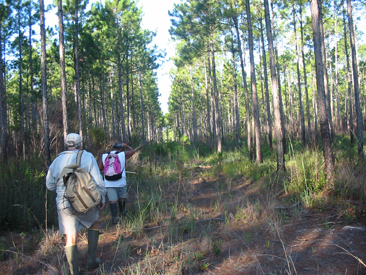
This hike went through a longleaf pine forest to reach the targeted forested wetland study site.

Being prepared for field sampling means having the appropriate gear. Bug suits keep biting insects away and permit researchers to concentrate on their work instead of pesky insects!
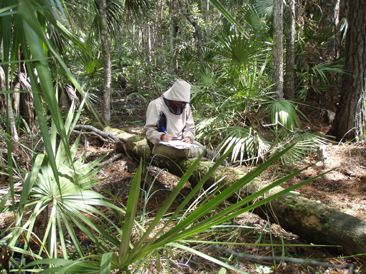
Field work always involves completing field observation data forms which is what this scientist is doing in forested wetland site in Florida (but why aren't her hands protected too!? Ouch!)
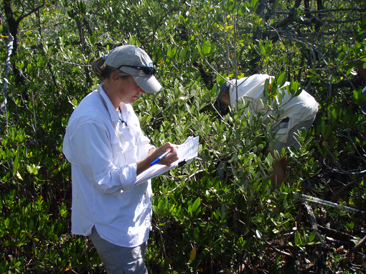
Field data form observations include wetland type, dominant vegetation, presence of anthropogenic stressors, and depth of standing water (if present).
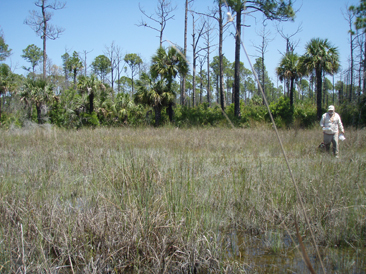
Part of the assessment involves walking the entire assessment area (approximately 0.25 hectare) and making observations of the wetland, including the plants, soils, and surface water.
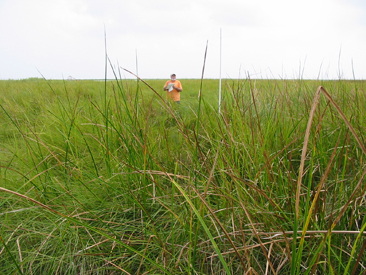
And still more data forms!
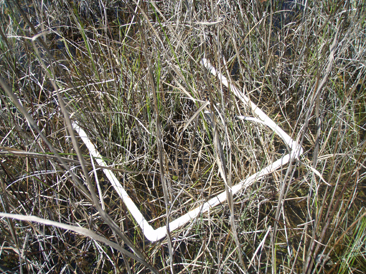
Once on site, the survey crew establishes sampling areas. A 1/4 square meter sample plot is pictured here, from which standing vegetation is clipped to extimate above-ground standing stock biomass
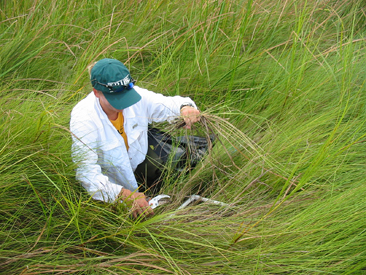
All of the live plant material within the plot frame is clipped and collected for identification and biomass measures in the laboratory.

At forested wetland sites, we cannot clip the vegetation or cut down the trees to get an estimate of the plant standing stock biomass. Instead, we measure the diameter of the tree trunks and and use published equations to estimate the tree biomass on site.
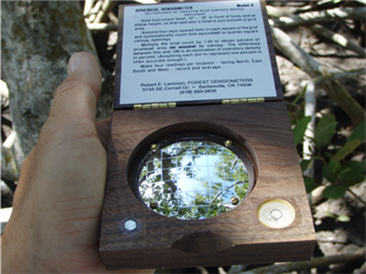
A densiometer is an instrument used for taking measurements of canopy cover in forested wetland sites.
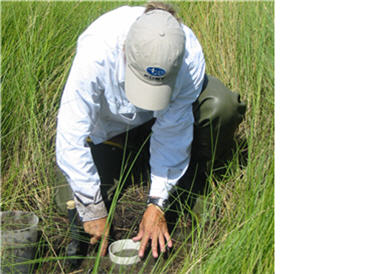
In addition to the above-ground biomass, a core plastic tube is used to sample the plant roots at marsh sites to measure the below-ground biomass.
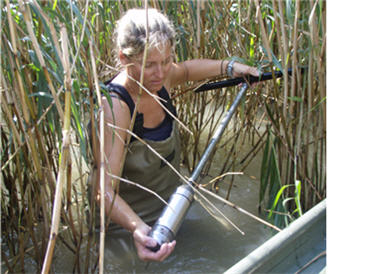
Soil samples are collected from the site for a variety of soil analyses including chemical compostion, soil structure, and bulk density. Here, a researcher is using a soil probe to collect a core of soil for analysis.
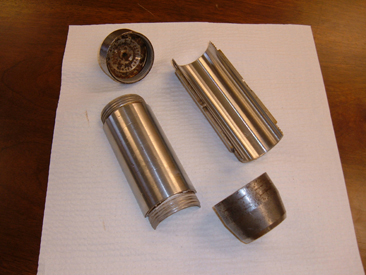
The coring device used is a "split core sampler" which allows the researches to collect a core and remove it as an intact column of soil from the sampling device
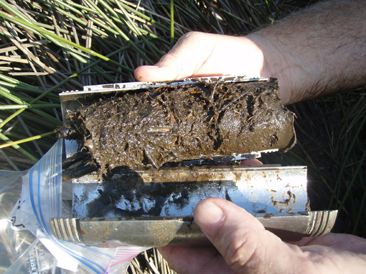
In this core you can see the different layers of the wetland soil sample; a top organic layer with live root material (right), a middle peat layer, and a sandy mineral layer (bottom)
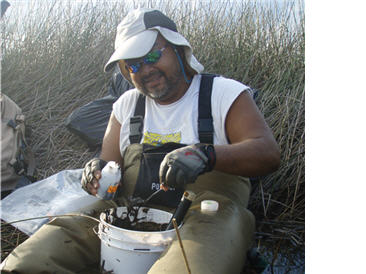
Several soil samples collected from different areas of the wetland being sampled are mixed together to form a composite sample, from which chemical composition is measured. Here a researcher is transferring soil into sampling containers that will be transported to the laboratory for analysis.
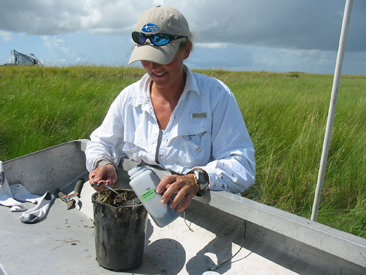
We are always aware of the weather when working on the water - from snow to high winds to encroaching thunderstorms. On this today, we kept a close eye on these thunderclouds.
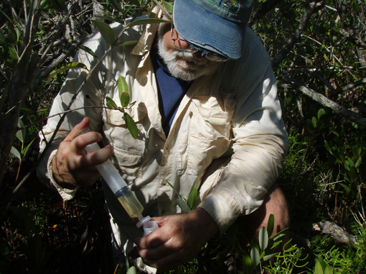
Samples of porewater are also collected from the site for a variety of water analyses including pH, salinity and nutrient content. Here, a researcher is using a porewater collecting device, called a "sipper" to draw water up from the ground below the surface of the soil.

.....after the data sheets are complete and all the samples are collected, the gear and samples are packed up into the backpacks and carried as much as 2 miles back to the vehicle. Despite the occasional torrential rain downpour, heat and blazing sun, biting insects, long hikes, flat tires, truck stuck in the mud, or broken down boat motor, the researchers are still smiling in the end.